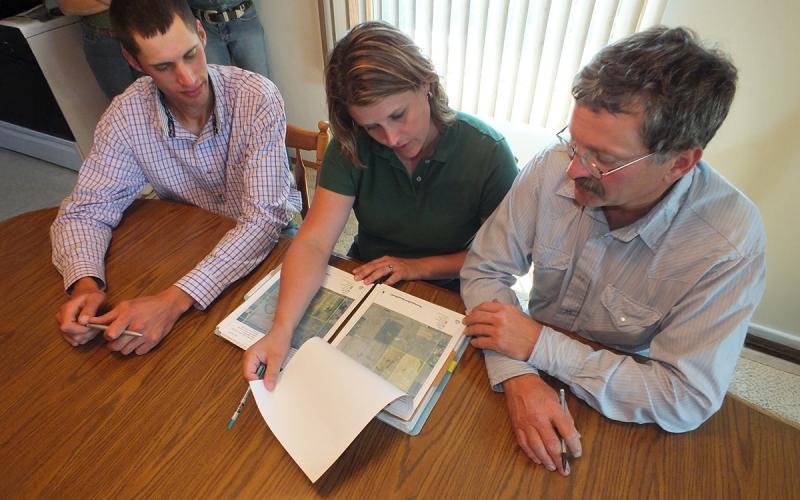The South Dakota Ag Land Income Tracker is designed to estimate and display changes to the annual revenue per acre derived from standard agricultural practices on an average, unimproved cropland acre in South Dakota counties. The primary aim is to facilitate the determination of cropland value through an income approach to appraisal. This approach involves multiplying the average revenue per acre by a factor, such as the landlord's share or return to capital, which represents income allocated for land and debt service. The resulting value, often referred to as net income per acre, can be divided by the capitalization rate, such as the current long-term interest rate for agricultural real estate, to determine the asset's income-based value. It is important to note that the income estimate provided here does not include income from federal agricultural support programs, non-agricultural income from sources such as leases for wind, solar, or hunting, the net present value from speculation on inflation or technological improvements, or income from alternative practices, improvements, or uses.
Asset Value =
(Average Revenue per Acre × Percent of Landlord's Share)
÷ Capitalization Rate
Traditionally, the USDA-NASS (National Agricultural Statistics Service) has served as the primary source for cropland revenue data. However, due to missing data and uncertainties regarding the continued collection of NASS data at the county level, it is necessary to consider alternative sources, such as the USDA-RMA (Risk Management Agency) and USDA-FSA (Farm Service Agency). These sources vary in the types of data they collect and their collection methodologies. For example, while NASS data is survey-based and aims to extrapolate results for the entire population, the RMA relies on actual reported values for insured acres, and the FSA gathers data from federally supported program-enrolled acres.
NASS typically provides yield and acreage data for major crops by May of the following year. The RMA releases its data on major crops by the end of June of the following year, while the FSA offers final acre estimates by the end of January of the subsequent year. As new data becomes available from these sources, the tool will be updated to reflect the latest information. This ensures that users have access to the most current and precise revenue estimations, enabling them to make informed decisions regarding cropland value and associated agricultural real estate.
Expanding the estimation to include net income for non-cropland acres, which are predominantly used for livestock production, presents additional challenges due to the scarcity or complexity of real-time data sources. As a basic measure, pastureland rental income, sourced from USDA-NASS, has been used to estimate net income on non-cropland acres. In cases where data is missing or inaccurate, and uncertainties arise regarding NASS data acquisition, it becomes crucial to explore alternative data sources to fill gaps or correct errors. These alternative data sources include historical county pastureland rent, recent cattle prices, potential income from non-cropland conversion to cropland, and rental data from adjacent Agricultural Reporting Districts.
Asset Value =
Rent ÷ Capitalization Rate
This comprehensive approach not only enhances the precision of revenue estimations for both cropland and non-cropland acres but also provides a framework for decision-makers to more accurately appraise agricultural land value, adapt to changing data availability, and consider economic variables that impact agricultural real estate.

